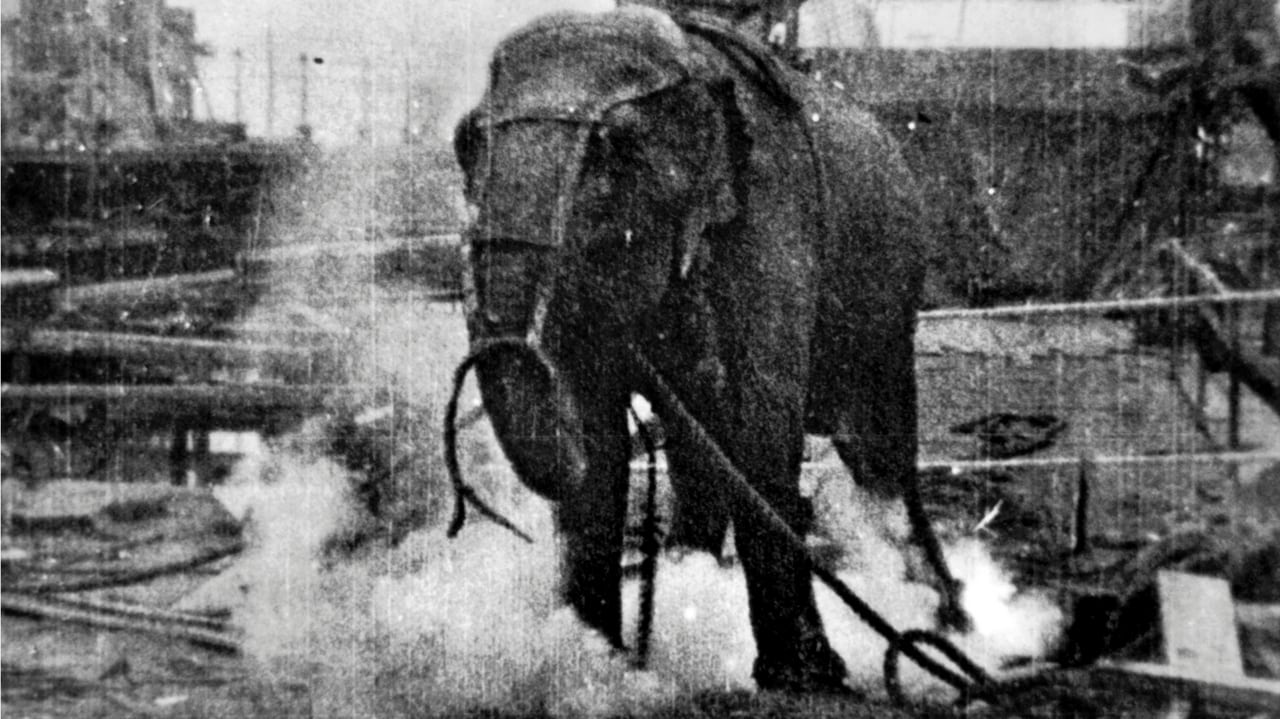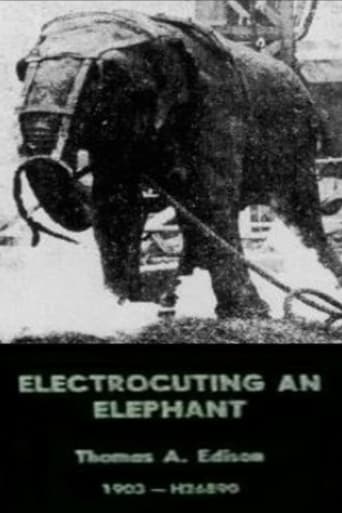

Thomas Edison May Have Done Lots Of Great Inventions But WTF Is This!!!! I Am Sorry But This Movie Is Simply Awful. The Plot Is That This Elephant Walks To A Certain Point & Gets Electrocuted. Okay The Picture Quality Looked Like Someone Used It For Toilet Paper. I Thought That The Early Charlie Chaplin Films Were Awful. Okay Thomas Edison May Have Been An Inventor But Why Did He Make This Film He Could Have Filmed A Baby Being Fed & It Would Have Been Better. People Might Say I'm Being Harsh On The Times But Would You Enjoy Something Like This From What I Have Said Edison May Have Made The Lightbulb But Why Did He Make This Particular Movie. Well I Might Sound Like A Complete A##hole But Watch This On Youtube Then You Will See This Abomination. I Still Can't Believe This Film Is Completely Awful. All In All The Worst Short Film I Have Ever Seen.Rating: 1/10
... View More"The Wizard of Menlo Park" was deeply responsible for many things we take for granted in 2007: even if he did not invent them without rivals or assistants, he gave birth to the electric light, the phonograph, the motion picture camera, the electric car battery, the electric power grid (possibly his most important but least recalled invention), the pre-fabricated house, and innovations to the telephone and telegraph, as well as the ticker-tape machine and an early voting machine. The total number of patents is over 1,000 - far more than any other American Inventor.But Edison was a ruthless business competitor. He frequently had vast legal fights over the precedence of his inventions over rivals. The best example is the telephone, where he was one of seven or eight rivals with claims against Alexander Graham Bell. Actually Edison's invention here was not the central idea that Bell and Gray had come up with independently of each other in 1876, but an improvement on the sound quality of the phone receiver and transmitter that Bell did not develop. Still it was part of the huge 1888 Supreme Court decision that was the longest U.S. Supreme Court decision (a single volume of their reports!) written by Chief Justice Morrison Waite - which, by the way, killed the poor Chief Justice from overwork within weeks of completing it.In 1886 Edison found an equally ruthless competitor in the area of electric power grids for large cities. This was George Westinghouse, inventor of the railroad air break. Westinghouse's firm had gotten the assistance of a new inventor, and former Edison assistant, Nicola Tesla. Tesla developed "alternating current", which was a rival system to Edison's "direct current". Edison's system was basically a straight circuit system of electricity. Tesla's system allowed the current to be switched from one circuit to another - actually it was a better, and more efficient system. But Edison was determined to break this rival by a publicity campaign.It started with electric power lines. Edison early on had his lines put underground, so that they would not be endangered by weather conditions. But Westinghouse was forced to have his lines out in the open - like telephone lines. When there were several accidental deaths by repair linemen on Westinghouse's lines (in particular one incident where the repairman was burned alive in front of hundreds of horrified onlookers in Manhattan's business district), Edison started insisting that A.C. current was far more dangerous that D.C.One result of all this was Edison helping some subsidiary inventors with getting Westinghouse A.C. generators and dynamos for an electric chair. Edison himself always denied that he invented the electric chair, but he helped several lesser figures along the way - for the complete story read Mark Essig's EDISON & THE ELECTRIC CHAIR (New York: WALKER & COMPANY, 2003). Edison experiment himself with cats and dogs (experiments he was glad to show the public). In the long run, despite assisting in the invention of a new method of execution, Edison failed to dislodge the public support of Alternating Current. But he never stopped trying.In 1903 he had an opportunity to combine his campaign against Westinghouse and A.C. with his invention of the motion picture camera. He assisted in "putting down" a well known public elephant ("Topsy") who had killed several men. He did so by electrocuting the poor beast with A.C. But the entire killing is on film - and one can view it to this day. It is a pitiful looking film - whatever poor "Topsy" had done it was a poor beast - not a Machiavellian murderer. The moment we see the explosions of electricity sparks that show the death of the elephant, we are aware it will soon be over, but the sudden collapse of "Topsy" is still an unpleasant sight to view. The film leaves a bad flavor in the mouths of modern movie audiences. Yet, sad to say, it probably made a profit for Edison - his description of the film in his catalog of films shows real pride in his accomplishment here. In 1903 it may have been exciting entertainment for many Americans watching it. One is glad that more people are appalled by it today - sometimes one can sense the human race has improved a little bit.
... View MoreOh my God, I was so expecting something more entertaining than this when I downloaded this movie, seeing as 1903 was one of my fave years for movies ever, but it sucked! The "plot", although I'd hesitate to call it that, is about some dumb elephant. It slowly makes its way onto some platform and gets electrocuted to death. Lame. Even for a short film, the plot was too thin to keep my attention. Edison is, like, the worst director ever. Plus, the elephant has no screen presence whatsoever. And the ending? Wow, that wasn't predictable at all. *sarcasm*The picture quality is horrible too. You can barely tell what's going on most of the time. The only positive thing about this movie is that unlike most other un-scary horror flicks this didn't spawn eleven sequels. Other than that this is a complete waste of money and 1 minute of your life you'll never get back.
... View MoreThis would have to be considered as an early example of the potential of motion pictures to arouse strong feelings, and despite its disturbing content, it is still of interest for that reason. Incidents such as the one depicted here used to happen every so often, but this is one of the rare ones that is still remembered, because seeing movie footage of it makes it stick in the mind much more than reading an account in print, or even seeing a still photograph, could have done. Some of the general issues involved are also still topical, more than a century later.Being aware of the background to the event, which some of the commentators here have described (the full situation is also described in at least one of the video releases), helps to explain what is going on. Even so, it is very uncomfortable to watch this, regardless of your reason for so doing, and it should thus be viewed with caution.It would be difficult or impossible to watch this movie without having some strong feelings about it. Some of the speculations (and criticisms) on why the Edison Company chose to film it as a movie are definitely to the point. Yet it still serves today as an early and uncomplicated example of the powerful ability that motion pictures have to make us react to their images.If you had just read a news story about this ill-fated elephant, it would probably provoke some response, but it would more than likely be rather short-lived. When you actually see it happen on a screen, it's much harder to forget.
... View More